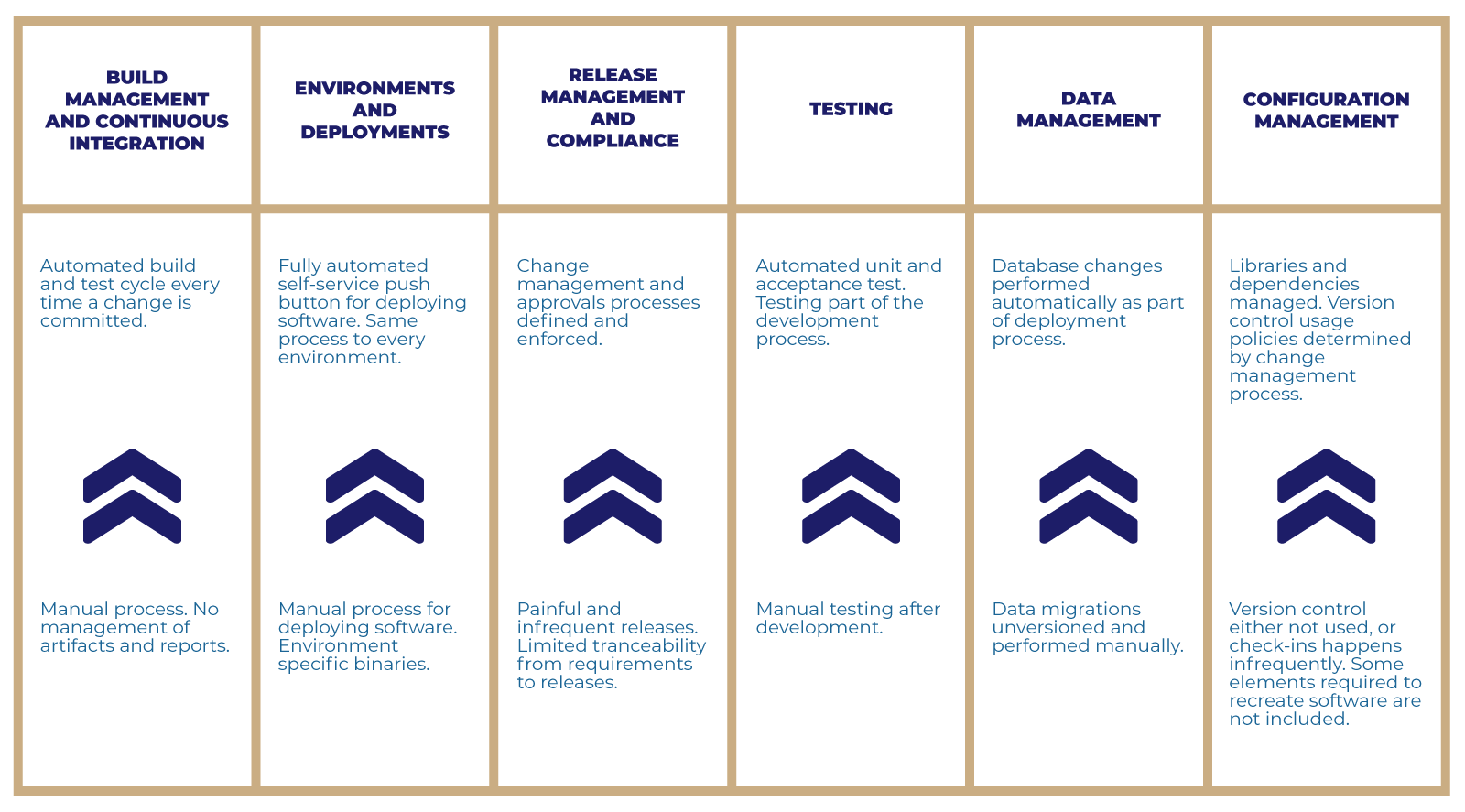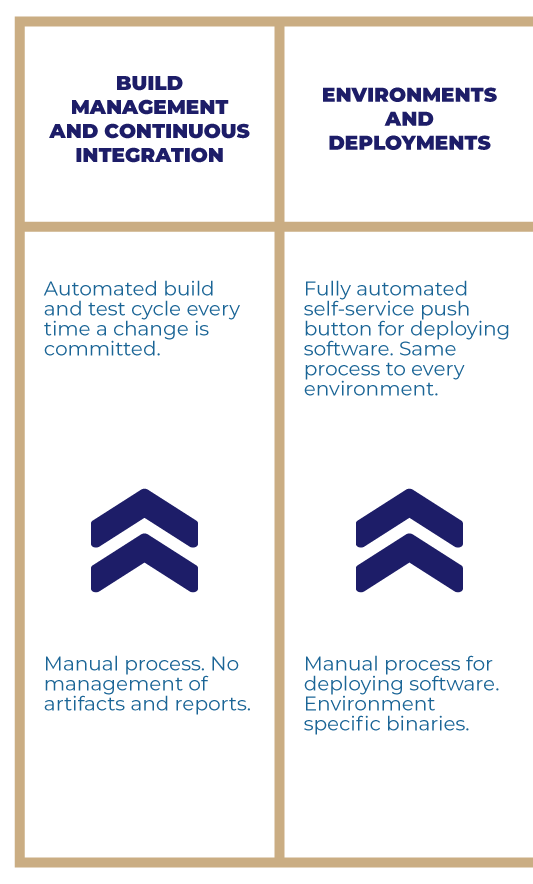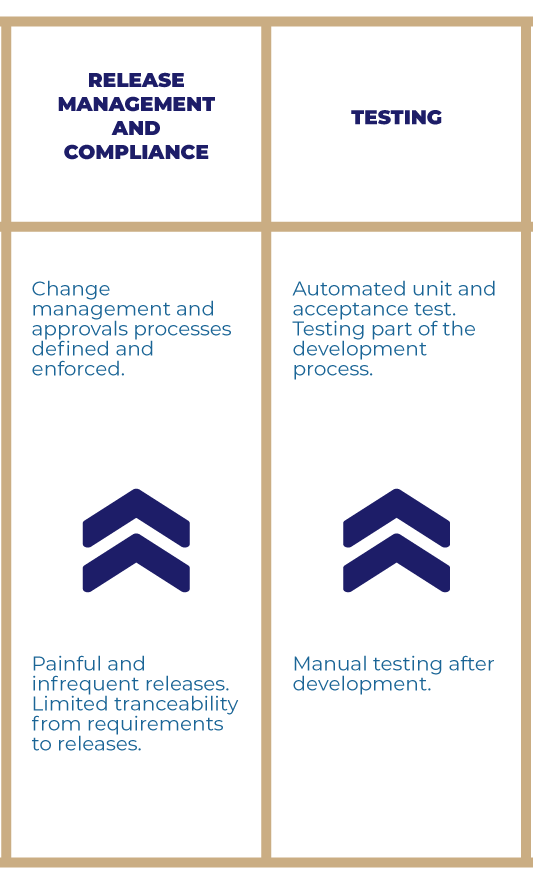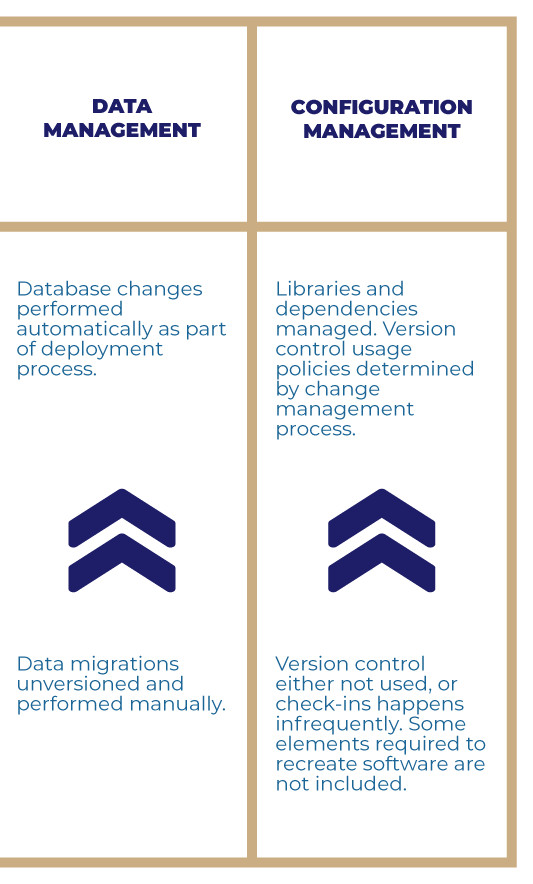CONTINUOUS DELIVERY
 USER EXPERIENCE
USER EXPERIENCE
SECURITY SERVICES 
You know that Facebook does at least two new versions releases to production every day. Are you ready to manage your technology platform with the most recent and the best practices of the industry?
Answer the following questions about the current performance of your company:
Continuous Delivery Model enables the implementation of a series of practices that range from the automation of the development process to deployment to production. These practices will make much more effective, efficient, and controlled the production of software.

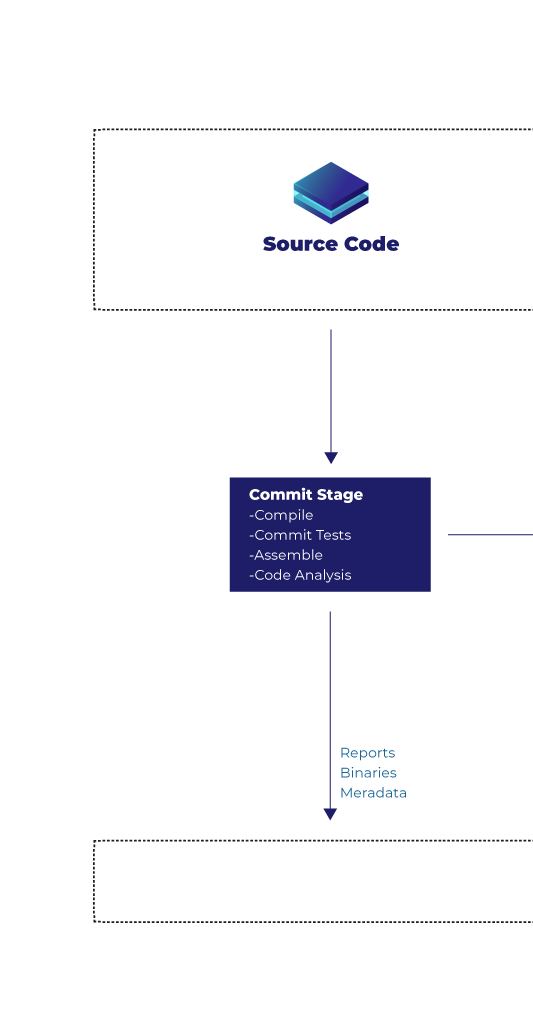
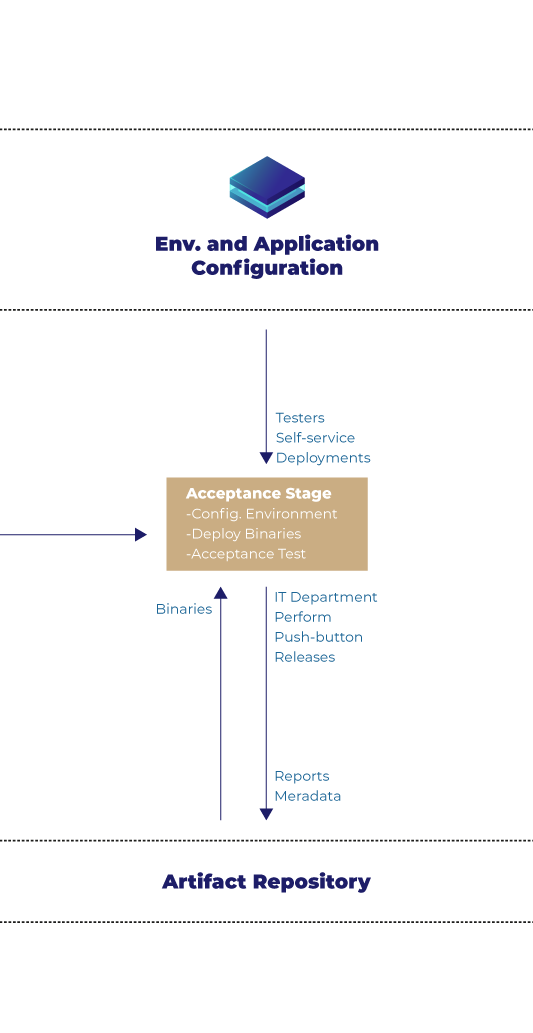
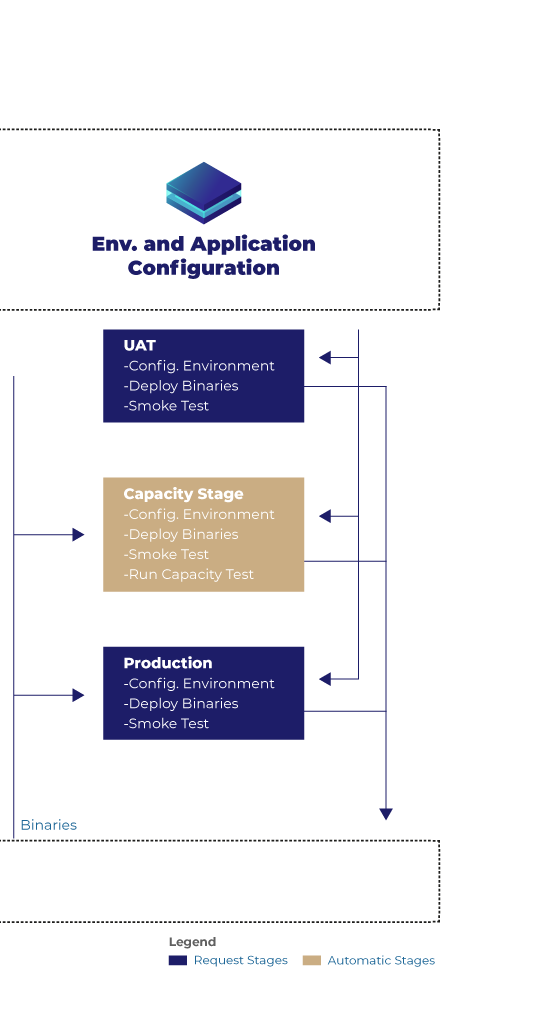
The benefits are numerous:
- Improve software quality.
- Decrease time to market of new features through increasing the frequency of deployments to production.
- Decrease deployment errors that require rollback action to the pre-existing versions.
- Reduce the manual overhead that involves the environment management, configuration and deployment activities.
- Optimize the use of your hardware resources when having created environments only at the time of their use.
Continuous Delivery ModelSupported on a set of practices that respond to the different realities of the process. There are three key fundamentals such as:
CONFIGURATION
MANAGEMENT
Configuration management is the practice that pursues the version control of all the elements of a software solution, source code, data, data schemas, and configurations. With the support of version control tools, a controlled evolution line is established through changes in different elements.
CONTINUOS
INTEGRATION
Continuous integration is the practice running a team of software developers that integrate continuous and frequent changes to a version control tool. Once we receive the changes, it is checked automatically the consistency of the resulting version.
TEST
STRATEGY
To guarantee the quality of the software, it is necessary to define automated test strategies that can be incorporated into continuous integration and version control mechanisms. Implementations of tests can be used repeatedly in different times to ensure the correctness of the product.
In DBAccess we have developed a methodology to raise the level of maturity of our customers in the Continuous Delivery Model through 4 stages with specific objectives.
We take them to a repeatable and defined operation level in each of the practices that make up the model.
